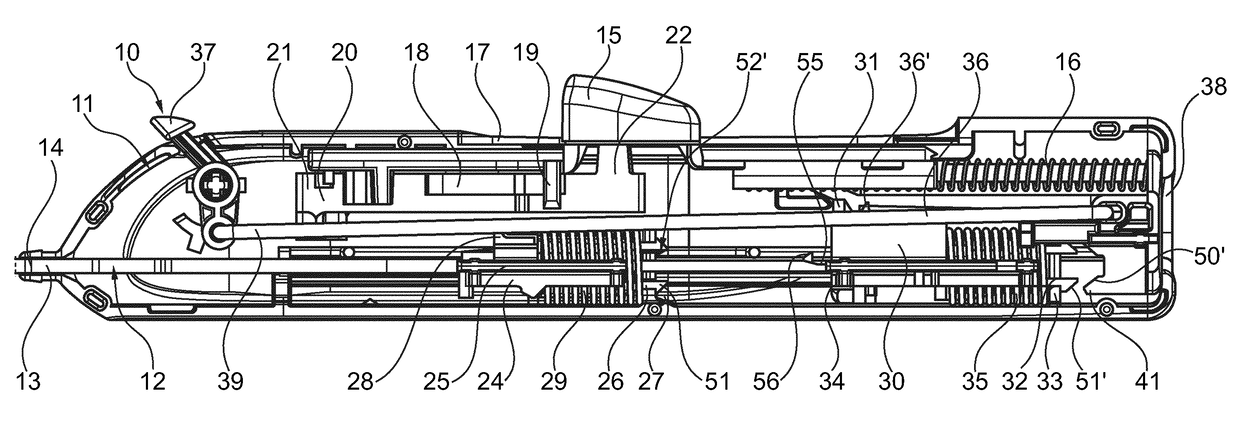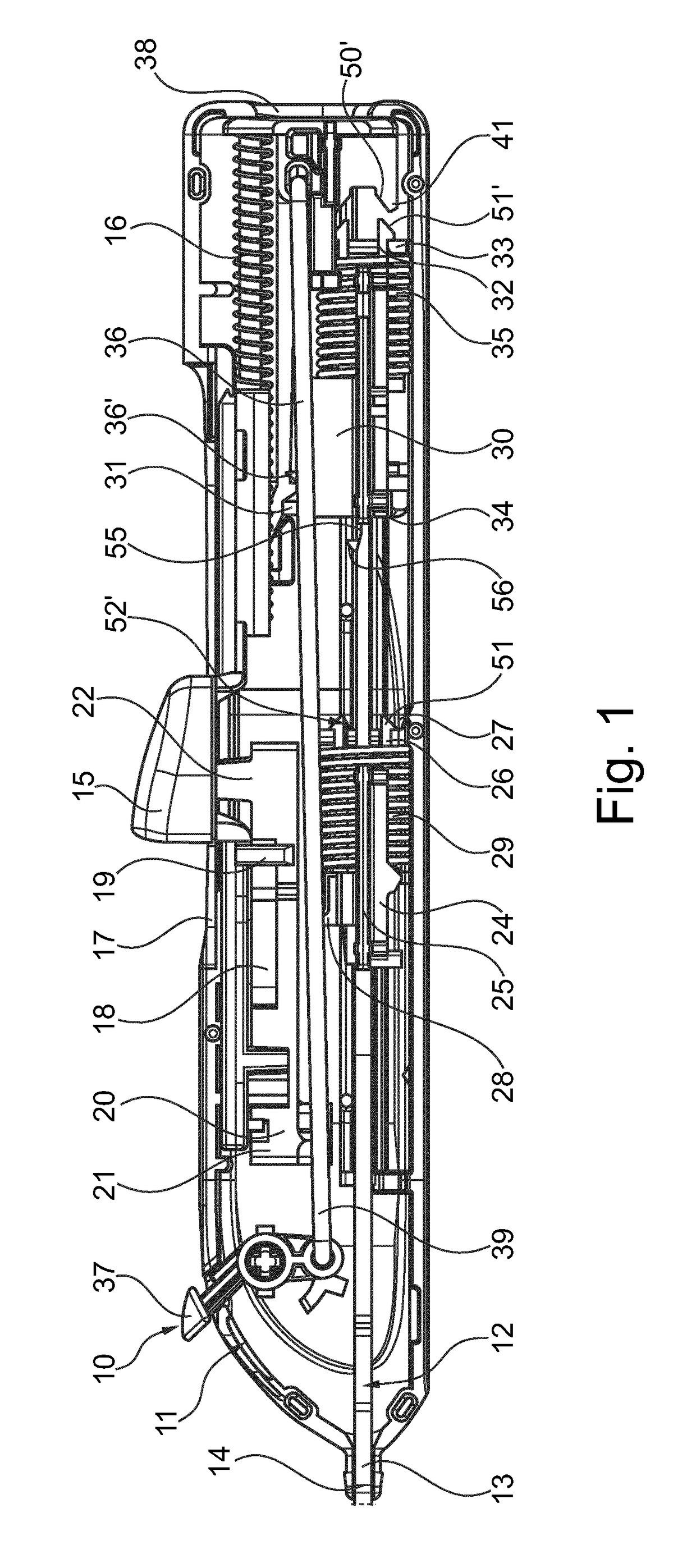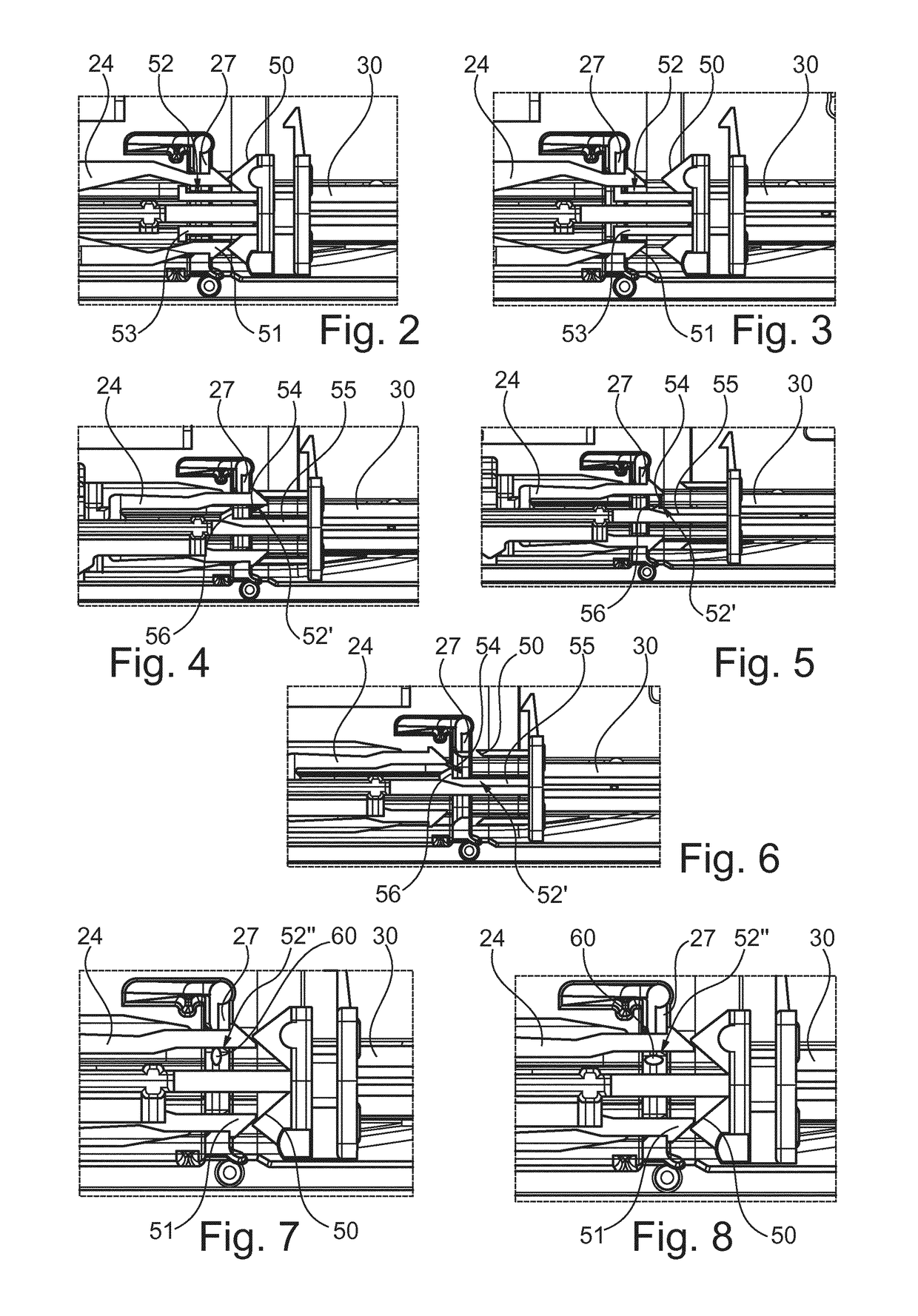Device for taking at least one sample of tissue
a tissue and sample technology, applied in the field of tissue samples, can solve the problems of unintentional shots in the devices of the prior art, and achieve the effects of increasing friction between the parts, facilitating arming, and facilitating us
- Summary
- Abstract
- Description
- Claims
- Application Information
AI Technical Summary
Benefits of technology
Problems solved by technology
Method used
Image
Examples
Embodiment Construction
[0029]FIG. 1 represents the device for taking samples 10 of the invention almost in its entirety. This device comprises a body 11 and a needle 12. The needle is formed by a stylet 13 and by a cannula 14. The stylet comprises a tip (not represented) allowing a penetration of the needle into the organ from which one wishes to take a sample. Furthermore, this stylet comprises at least one notch (not represented). In practice, the stylet 13 comprises a relatively long notch that enables a sample of great length to be taken. The cannula 14 slides around the stylet 13 and is used on one hand to section the tissue into which the stylet has penetrated and on the other hand to keep in place the tissues taken at the time of the extraction of the needle from the organ.
[0030]The body 11 essentially comprises an arming mechanism arranged to arm the needle 12 and a triggering device arranged to release a shot of the needle for the intended sampling. More particularly, the arming of the needle is ...
PUM
 Login to View More
Login to View More Abstract
Description
Claims
Application Information
 Login to View More
Login to View More - R&D
- Intellectual Property
- Life Sciences
- Materials
- Tech Scout
- Unparalleled Data Quality
- Higher Quality Content
- 60% Fewer Hallucinations
Browse by: Latest US Patents, China's latest patents, Technical Efficacy Thesaurus, Application Domain, Technology Topic, Popular Technical Reports.
© 2025 PatSnap. All rights reserved.Legal|Privacy policy|Modern Slavery Act Transparency Statement|Sitemap|About US| Contact US: help@patsnap.com



